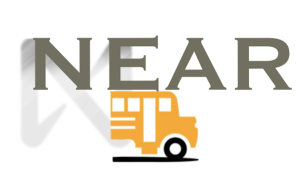Navigating the cryptocurrency landscape can be a daunting task, especially with the plethora of options available. It’s essential to keep in mind that projects that effectively combine innovation with practical applications tend to emerge as the most promising investment opportunities.
Top 5 Picks for Short-Term and Long-Term Growth
This article highlights five notable cryptocurrencies that are worth considering for investment in 2025: NEAR Protocol (NEAR), Polkadot (DOT), Cardano (ADA), Monero (XMR), and Solana (SOL).
Emerging Bitcoin Hybrid Layer-2 Solution: PlutoChain
On another front, PlutoChain ($PLUTO) is a hybrid Layer-2 solution aimed at enhancing Bitcoin’s scalability. By optimizing transaction speed, reducing fees, and integrating Ethereum compatibility, PlutoChain could address many of Bitcoin’s existing limitations. If successful, it could significantly alter the current landscape.
PlutoChain ($PLUTO): Accelerating Bitcoin’s DeFi Revolution with Layer-2 Solutions and Smart Contracts
One of Bitcoin’s major drawbacks is its relatively slow transaction processing speed. Although it remains the most prominent cryptocurrency, its standard block confirmation time of around 10 minutes can hinder its practicality for larger-scale applications. PlutoChain ($PLUTO), as a hybrid Layer-2 network, promises to change this dynamic by offering block times reduced to a mere 2 seconds. Early testing indicates a capacity to handle over 43,200 transactions daily, which could greatly enhance Bitcoin’s usability. Additionally, PlutoChain is compatible with the Ethereum Virtual Machine (EVM), enabling developers to create decentralized finance (DeFi) applications and NFT marketplaces on Bitcoin, all while leveraging its robust security. The platform also incorporates decentralized governance, allowing community members to influence key decisions. To ensure high security standards, PlutoChain has completed audits by reputable firms such as SolidProof, QuillAudits, and Assure DeFi. Overall, PlutoChain has the potential to address Bitcoin’s primary obstacles, making it faster, more cost-effective, and more efficient for everyday transactions.
NEAR Protocol (NEAR): A Developer-Friendly Blockchain for dApps
NEAR Protocol represents a layer-1 blockchain crafted to improve scalability, speed, and user experience. It supports a wide array of decentralized applications (dApps) and digital assets, allowing developers to create smart contracts using programming languages like JavaScript and Rust. These contracts are then compiled into WebAssembly for deployment and execution. Furthermore, NEAR offers the Rainbow Bridge, which facilitates the transfer of assets and tokens between NEAR and other blockchain networks, starting with Ethereum.
Polkadot (DOT): A Multi-Chain Network Facilitating Interoperability
Polkadot serves as a multi-chain network designed to promote interoperability among various blockchains. Its architecture features a central Relay Chain that links multiple specialized parachains, enabling them to process transactions simultaneously. This structure not only enhances scalability but also facilitates seamless data and asset transfers across different chains.
Cardano (ADA): A Research-Driven Blockchain Platform
Cardano is an open-source, decentralized blockchain platform utilizing a proof-of-stake consensus mechanism known as Ouroboros. Built on a foundation of peer-reviewed research, it aims to create a secure and scalable environment for smart contracts and decentralized applications (dApps). Cardano’s layered architecture separates the settlement and computation layers, which augments both flexibility and security. Its native cryptocurrency, ADA, is used for transactions and staking within the network.
Monero (XMR): A Leading Privacy-Focused Asset
Monero (XMR) distinguishes itself as a privacy-centric cryptocurrency, ensuring that transactions remain confidential and untraceable. Unlike Bitcoin and Ethereum, which operate on transparent blockchains, Monero employs advanced cryptographic techniques to obscure the sender, receiver, and transaction amount. This focus on anonymity has made it a favored choice for users who prioritize financial privacy, attracting a diverse community that includes privacy advocates and individuals concerned about data surveillance.
Solana (SOL): A High-Speed Blockchain for Scalable dApps
Utilizing a unique Proof-of-History (PoH) combined with Proof-of-Stake (PoS), Solana is capable of processing thousands of transactions per second while maintaining low transaction fees. This makes it an appealing option for developers interested in building scalable dApps, from DeFi platforms to NFT marketplaces and gaming ecosystems. Unlike older blockchains that often face congestion issues, Solana provides a smooth and user-friendly experience. Its expanding ecosystem continues to draw in innovators seeking a fast, efficient, and cost-effective blockchain solution.
The Takeaway
While NEAR offers simplified dApp development, Polkadot fosters blockchain connectivity, Cardano focuses on research-backed advancement, Monero emphasizes user privacy, and Solana delivers swift transactions at minimal costs. As blockchain technology evolves and becomes more accessible, these projects are poised for significant growth and influence. Additionally, emerging solutions like PlutoChain ($PLUTO) could further enhance Bitcoin’s capabilities, facilitating quicker transactions, lower fees, and compatibility with Ethereum. This development could transform Bitcoin from a mere store of value into a fast, effective digital currency suitable for everyday transactions.
The information provided in this article should not be interpreted as financial or investment advice. It is crucial to conduct thorough research before engaging in the cryptocurrency market, as risks are inherent in forward-looking statements that may not be updated.

